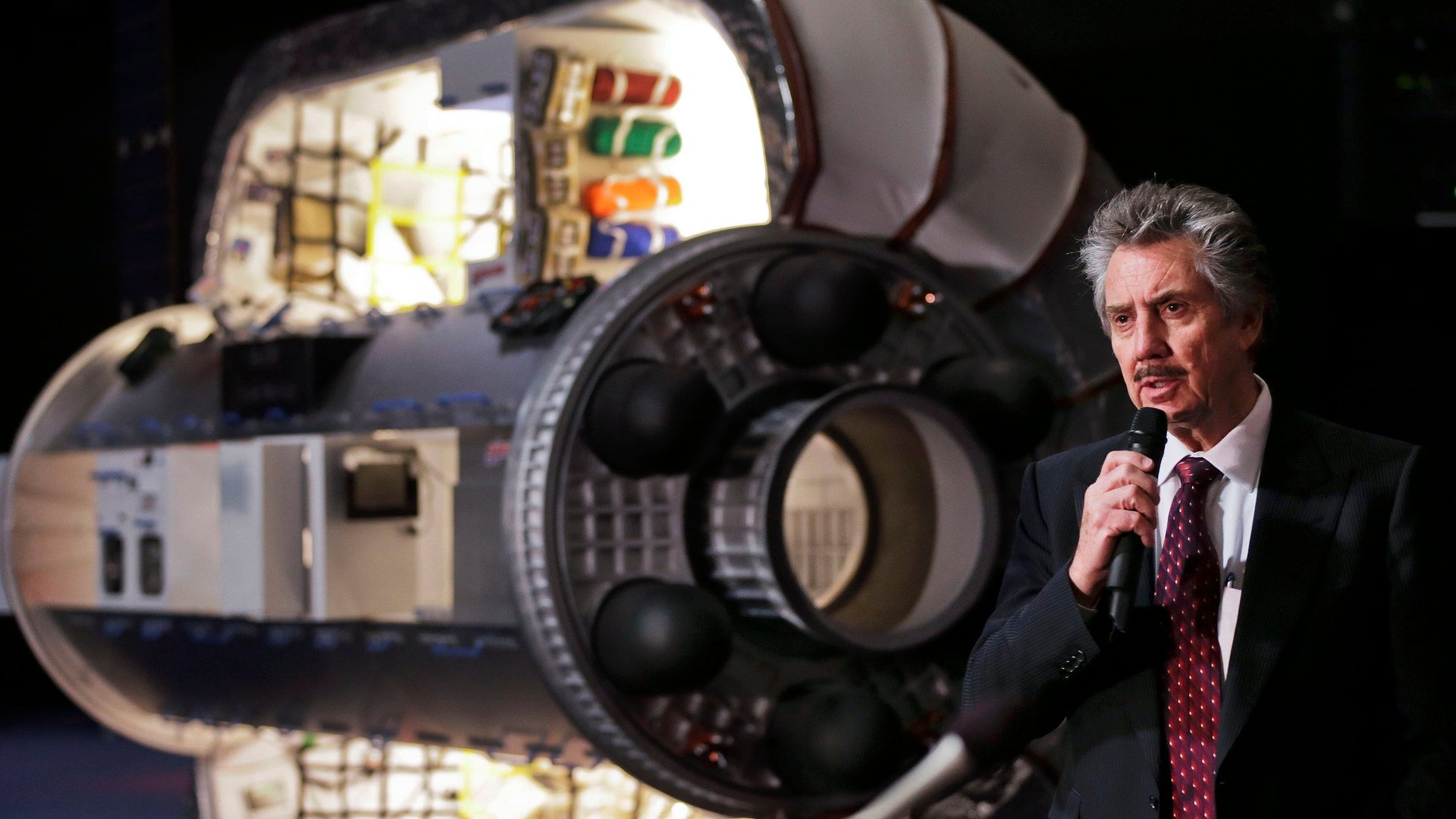Room for rent: Two private space stations need tenants to launch in 2021
A decade ago, Robert Bigelow thought he was on the verge of success: His company operated two uncrewed prototype space habitats in low-earth orbit, with a plan to launch a full-scale version full of people by 2010. That didn’t happen—in part because the global economy collapsed.


A decade ago, Robert Bigelow thought he was on the verge of success: His company operated two uncrewed prototype space habitats in low-earth orbit, with a plan to launch a full-scale version full of people by 2010. That didn’t happen—in part because the global economy collapsed.
“Countries went from fantasizing about ambitious space programs for human beings in [low-earth orbit] to worrying about whether or not they were going to default tomorrow on their national debt,” Bigelow says. Now, with money pouring into the commercial space industry again, he is opening a new company, Bigelow Space Operations, to drum up clients for a new set of habitats he intends to launch in 2021.
The habitats—inflatable spacecraft originally designed by NASA that can protect a crew of six amidst the hazards of vacuum and micrometeroids—are built by Bigelow Aerospace, a company its eponymous founder financed from successful hotel investments in Las Vegas. Bigelow’s space firm has also worked on behalf of the US military’s mysterious UFO investigation effort.
When it comes to space stations, Bigelow says his biggest competitors are NASA and China—a reminder that for all the new investment and efforts to drive down the costs of space access, only nations wield the resources necessary for costly activities in space.
Right now, the International Space Station, operated by a coalition of nations including the US, Russia, Canada, European and Japan, is the primary human habitat in low-earth orbit. China’s first manned space station, Tiangong-1, is set to fall out of orbit this year, but a larger, next generation replacement is set to begin launching in stages later in 2018.
Both of these flying laboratories have created research opportunities for scientists experimenting in microgravity and space engineers seeking to solve the challenges of living and working in a vacuum. The ISS has also created a vital market in space transportation that allowed innovative new rocket builders like SpaceX to flourish. Now, the Trump administration is proposing to shut down the space station in 2025 and, along with its partners, shift its focus toward the moon and Mars, while China is soliciting other nations to join it in its spaceflight program, including signing a collaboration agreement with Italy.
Bigelow is worried that, between these initiatives, financing for space activities in low-earth orbit will dry up before there’s enough money from private activities to make launching his habitats feasible. Scientific research and manufacturing that take advantage of microgravity, earth and space observation, and tourism are all mooted as profitable orbital business models, but the entrepreneur suggested today to reporters that they wouldn’t suffice.
“We don’t look at tourism as a particularly deep market,” he said on a press call announcing the new business. “What we’ve always anticipated and expected is that we would be very involved in helping foreign countries to establish their human space programs.”
Now, Bigelow worries that the Trump administration “doesn’t have a plan” to replace the ISS without ceding dominance in low-earth orbit to China. In the most recent budget, the White House requested $150 million from Congress to have NASA begin working up such a program in concert with private companies. Bigelow said he would not be attending a meeting of the National Space Council tomorrow, that is expected to discuss public-private space partnerships.
Bigelow also announced a new partnership with the Center for Advancement of Science in Space (CASIS), the organization that promotes independent research on the ISS. In the partnership, his company, which already deployed an inflatable module called BEAM on the ISS, will work with scientists to deliver self-contained experiments to the ISS. This will help prepare them for their own future operations.
Yet CASIS has trouble filling its capacity for research on the station and “only partially met expectations,” according to NASA’s Inspector General (pdf). That doesn’t bode well when it comes to demand for a private station that must be self-sustaining.
Besides working with national space programs, Bigelow didn’t elaborate on what other activities non-science activities would take place. The first order of business for his new company would be market research. “By the time Christmas arrives, we should have a much better understanding of what this space commercialization activity, as far as humans in space, really amounts to,” he said.
The entrepreneur said he had the funds to construct two new space stations with 330 cubic meters of internal volume, called B-330s, to launch in 2021—if he could drum up enough business to make use of them.
“If we do not see a viable business case…because NASA wishes to use them, or that we have a viable business case with the corporate world, or with the national world, that would be the worst case scenario.” he said. “We would pause after developing the two B-330s, they would be sitting on the ground waiting for deployment, if in fact the business weren’t there.”